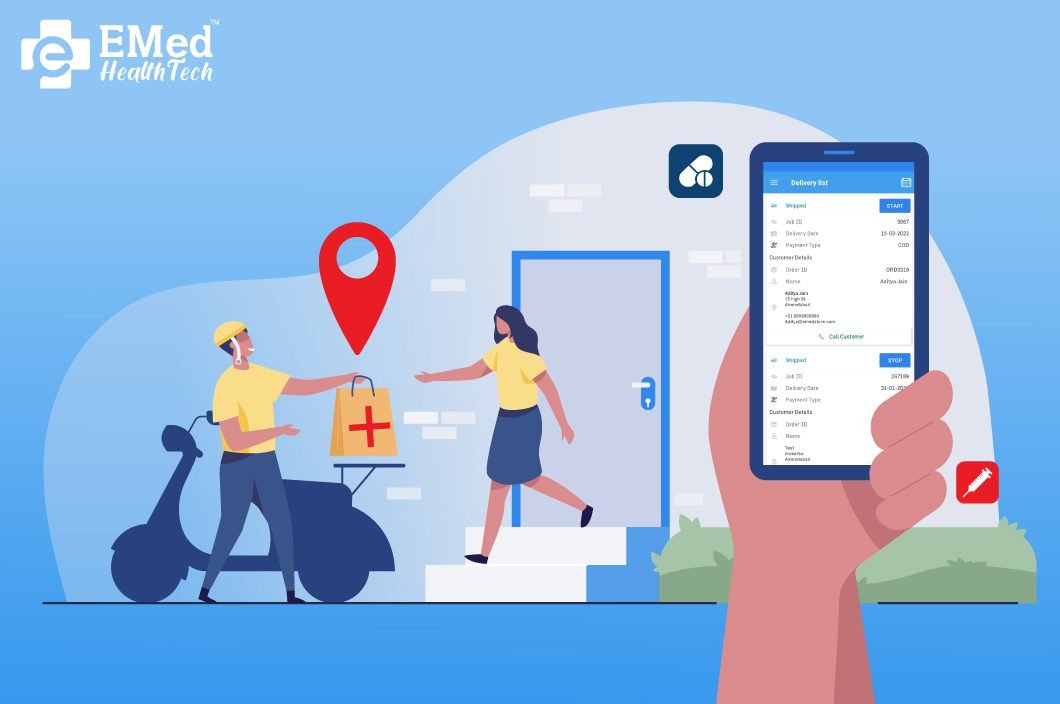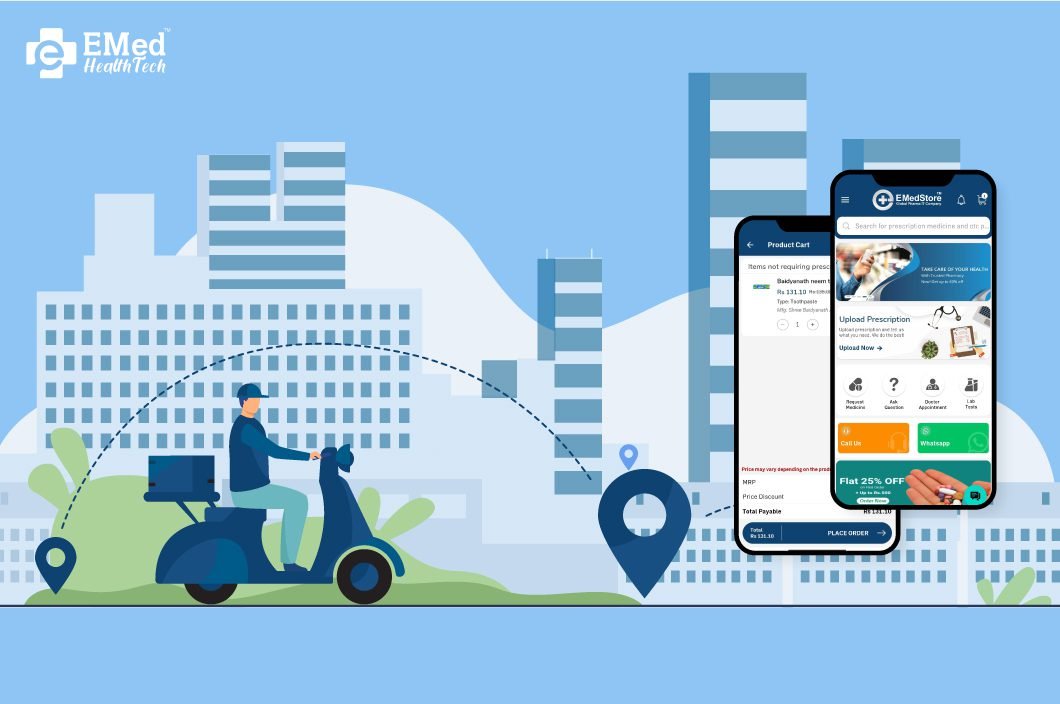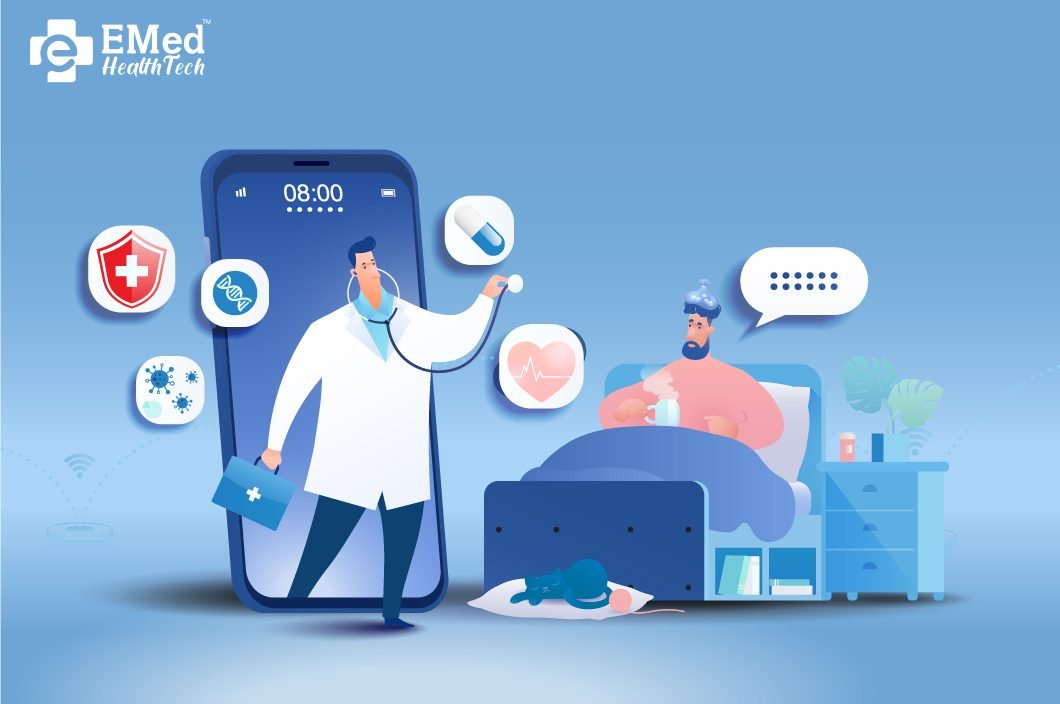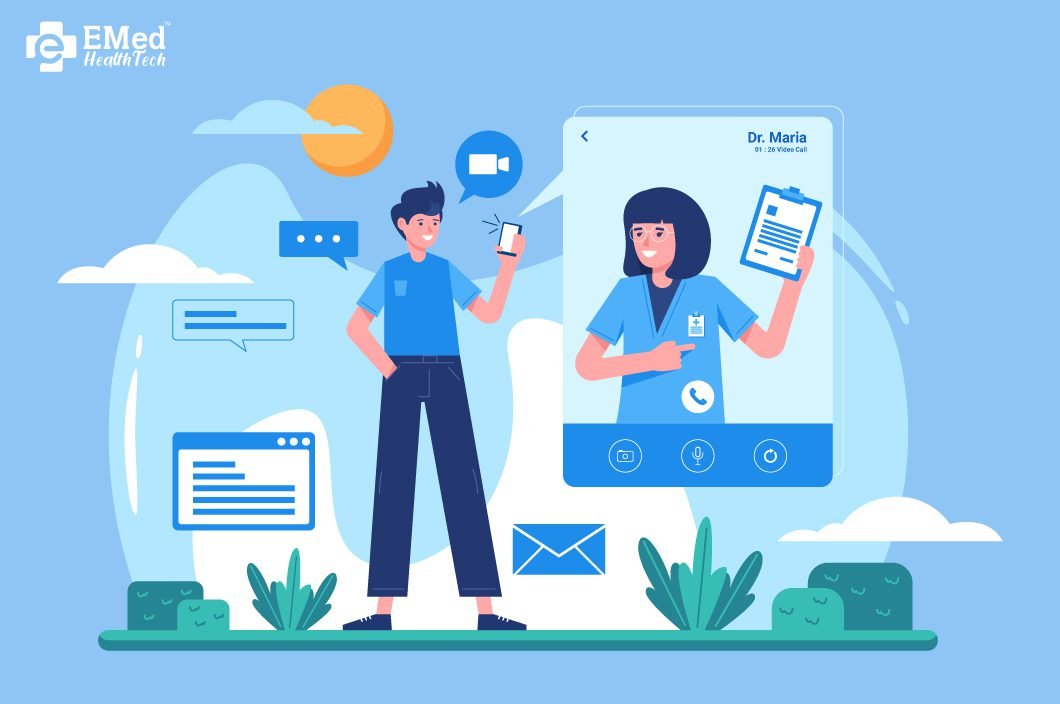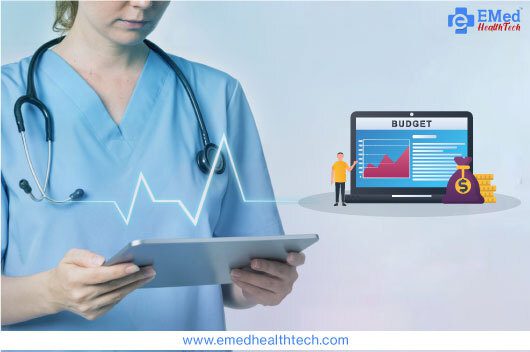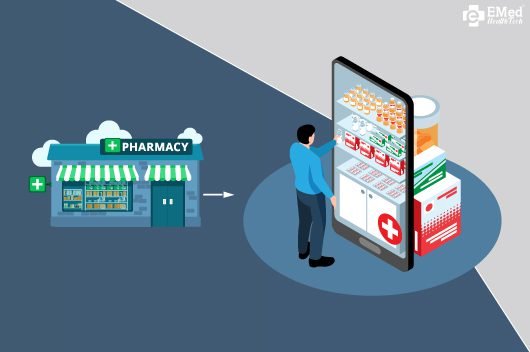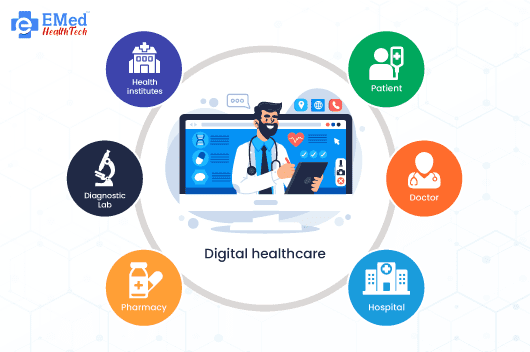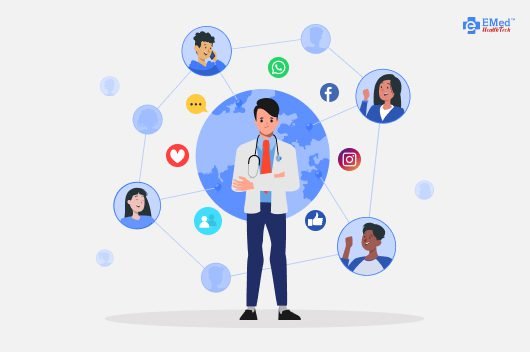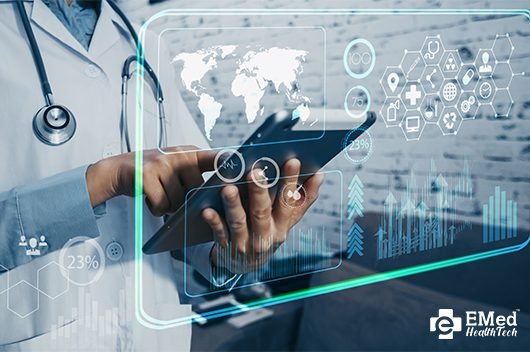The pandemic has driven healthcare systems and pharmacy retailers worldwide to embrace digitization. Medicine delivery apps have been a massive game-changer amidst the crisis, enabling consumers to get their medicines and pharmacy products delivered to their doorsteps while their lives were restricted indoors. Since then, these apps have grown in popularity as consumers get accustomed to buying medications online rather than from traditional brick-and-mortar stores.
If you are in the pharmacy business and looking to shift to an e-commerce platform, this guide is for you. But before we dive into how you can start your medicine delivery app development from scratch, let’s look at some of the hottest trends for online pharmacies.
E-Pharmacy Trends
Trends in the online medicine market indicate that:
- Online medical services may cross over USD 300 billion by 2025
- E-pharmacies are expected to show seven times growth to reach $3.7 billion by 2022
- The global pharmaceutical medicine delivery market is expected to grow at a CAGR of 6.4% to reach $1.7 trillion by 2023
Top Benefits of Medicine Delivery Apps
Consumers often prefer medicine delivery apps due to the ease of use, wherein they can order medicines online with just a few clicks and have them delivered to their doorstep. Besides, there are advantages like privacy, no travel costs involved, easy check on medicine availability, and more competitive prices when buying online.
For pharmacy retailers, the advantages that medicine delivery apps provide are:
- Improved customer base
- Improved brand building
- Enhanced marketing options
- Higher revenue generation
- Easy and secured payment
Popular Business Models of Medicine Delivery App
Single-Store Model: In this model, a single store or medical company develops a single integrated medicine delivery app and enlists all available medications. Users can easily browse through the medicines available, choose the required items, and place an order for delivery. You can sell medicines through this model if you own a single pharmacy store.
Aggregator Model: This model allows an investor or business owner to create an online pharmacy marketplace by collaborating with different pharmaceutical stores, enabling them to sell medicines through their mobile app. Customers get a wide range of options to purchase medicines from all enlisted stores.
Customer-Oriented model: In this model, you can create a direct connection with the customer without involving any middleman in the transaction.
Key Features of Medicine Delivery App Development
As an experienced medicine delivery app developer, our team at EMed recommends a good medicine delivery app to have role-based user permissions. There should be four user roles – customer, pharmacist, admin, and courier delivery, with each role having a specific list of feature stacks. Let’s talk about them one by one.
Medicine Delivery App Features for Customers:
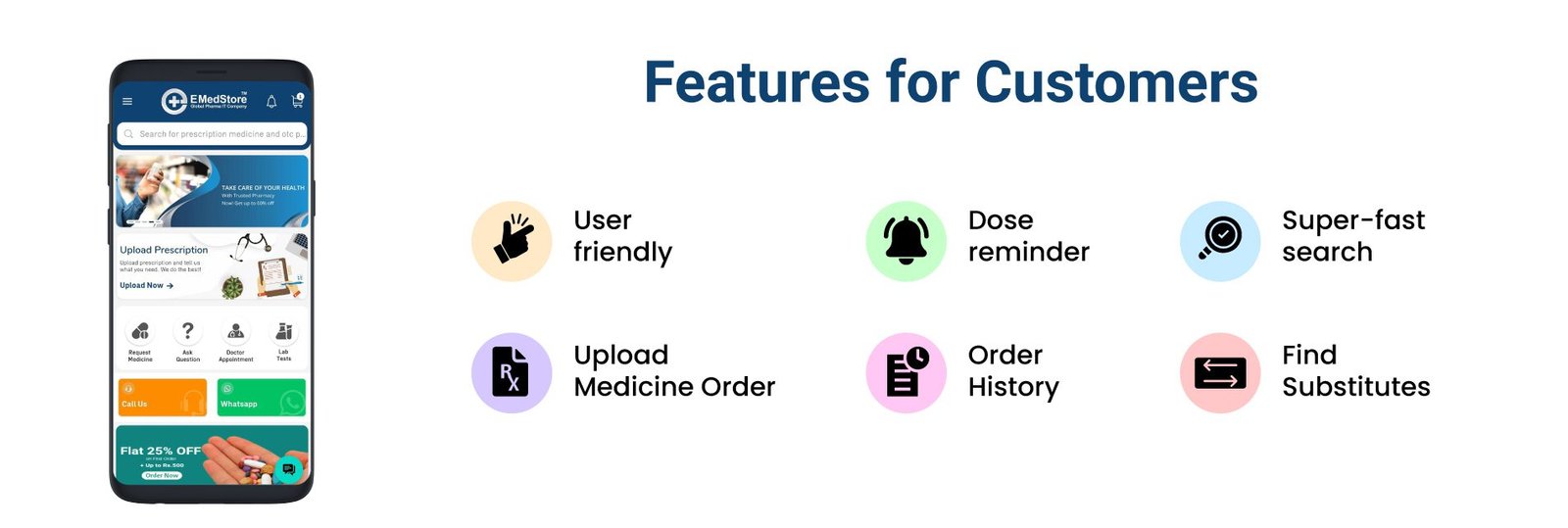
- Registration and login – Customers need to be able to easily register and log in using a mobile number or email ID and password.
- User profiles – Customers should be able to manage their profiles, delivery addresses, payment details, etc.
- Medicine order upload – A medicine ordering app development should allow customers to upload pictures of their Medicine order and get them reviewed by a pharmacist.
- Search medicines – It should be easy to search for medicines through filters.
- Medicine Details – Before ordering, customers should be able to check the details of medicines, and manufacturers and compare prices. And also able to find generic alternatives to branded medicines.
Medicine Delivery App Features for Pharmacy:

- Easy account set up – To enable quick, easy onboarding for pharmacies.
- Store details – Pharmacy owner or manager should be able to add, change, and remove medication lists and information related to medication.
- Digital Medicine orders – Pharmacists should be able to review uploaded digital medicine orders.
- Product management – To help the pharmacy owner manage and update product details.
- Order management: Pharmacists should be able to manage order processing and returns.
- Category: Add & Manage product category and sub-category
- Manage payments – To receive payments directly and track all payment details in real-time.
- Import Products: Import Products in bulk for a specific category with the help of a sample xls file
- Discounts and offers – To provide discounts and offers on medications as part of marketing strategies.
- Order history – To give users access to the complete history of their past orders.
- Ratings and reviews – To view and manage user reviews and ratings.
Medicine Delivery App Features for Admins:
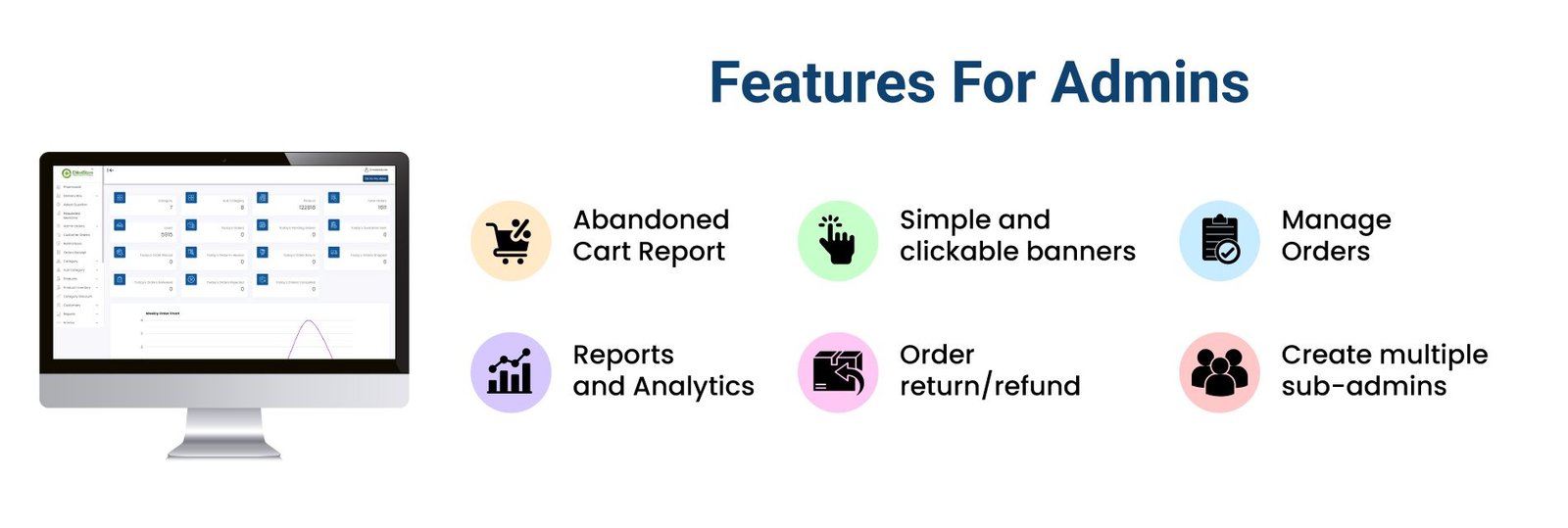
- Dashboard – Admins should be able to view and manage all ongoing orders, active pharmacists, customers, delivery personnel, and overall earnings on a single web view.
- Inventory – To help manage medicines inventory and notify on low stocks and expiry dates.
- Manage customers and suppliers – To manage registered customers, suppliers, and manufacturers.
- Manage Store: Super admin can enable/disable/delete the listed pharmacy stores.
- Assign order based on location: Super admin can view the customer orders and the orders will be assigned to the nearest store from the delivery location.
- Analytics and reports – Admins should be able to check all operational data and statistics to create reports on business workflow.
- Marketing actions – To take marketing activities based on analytics and reports to attract customers and increase business.
- Payment collections – To keep track of weekly, monthly, and yearly earnings.
Medicine Delivery App Features for In-house Courier:
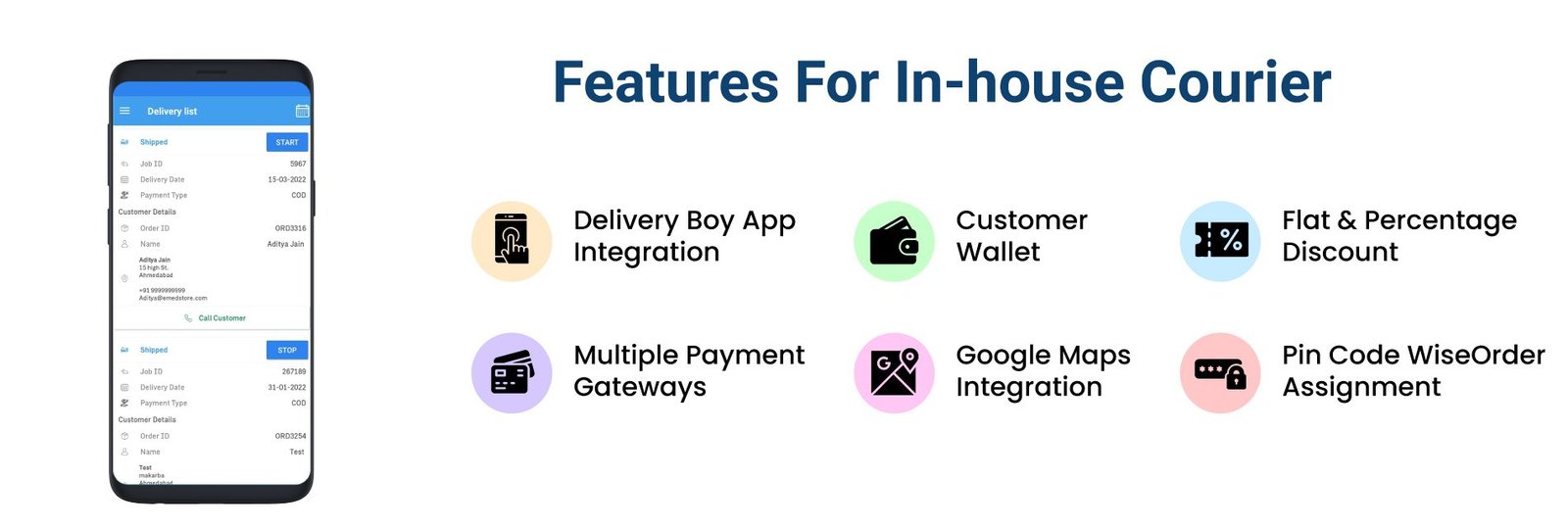
- Manage Profile
- Set Status of Package Delivery Progress
- Order Notification in Real-time
- Track Delivery Route
- Call or Text Customers for delivery coordination
Cost to Develop an Online Pharmacy App
Now that you’ve decided on medicine delivery app development, the model type, and features to be integrated, it is time to consider how much the app will cost.
The cost of developing a pharmacy app depends on the following factors:
- Number of dashboards and features in each dashboard
- Hourly rates of the medicine delivery app development company
- Number of platforms (iOS, Android)
- UI/UX design
- App maintenance cost
- Back-end integration and testing
Medicine Delivery App SDLC
The software development life cycle (SDLC) of our medicine delivery application is as follows:
- Analysis – Our expert team will analyze user requirements and use them to prepare technical documentation
- UI/UX Design – The next stage is developing the interaction between design elements and finalizing the UI/UX of the app.
- Development – Once the app design is ready, the front-end and back-end coding are integrated to create a fully functional app.
- Testing – The app is tested to check the key areas like usability, security, interface, etc.
- Deployment – After thorough testing and re-testing, the app is deployed to the server using FTP, and subsequently final test is performed.
- Maintenance – Once the app is published, we provide maintenance and support to ensure smooth, bug-free operation.
To know more about Medicine Delivery App Development: How Your Pharmacy Can Sell Online? check this out.
Frequently Asked Questions
- What platforms can you work on?
We work on the most popular app development platforms like Android and iOS.
- How much does it cost to develop an app?
According to our estimates, a basic medicine delivery app may cost anywhere between $25,000 and $40,000, while the ones with more advanced features can cost as high as $40,000-$70,000.
- Why should I hire EMed Healthtech for developing my medicine delivery app?
EMed Healthtech is a leading medicine delivery app development company with years of deep industry experience and proven expertise in building precise apps based on the client’s needs. We have custom and cost-effective app development solutions for start-ups and established businesses.
If you want to explore building a medicine delivery app with us or simply wish to learn more about our app development services, get in touch with us today!
